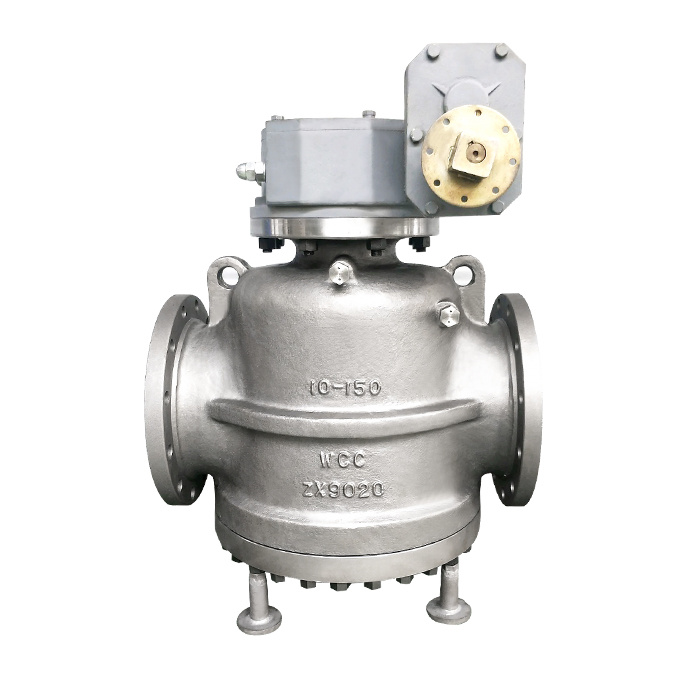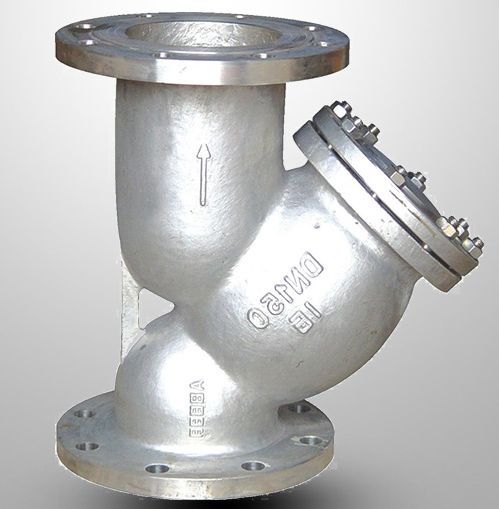Introduction to Valve Technology: Understanding Plug Valves and Butterfly Valves
Valve technology is rather complicated and detailed. It is very crucial that people with an engineering, technical or decision-making background should know all the little differences between valve types. Let’s talk about two main types of valves: plug valves and butterfly valves. Every one of these is designed with special features for particular purposes.
Plug valves have a special design feature. They can be of cylindrical shape or conical shape. You can turn these plugs where the valve is for control of the liquid flow. They are highly accurate and durable. This is because of their simplicity they use a plug that is used to control flows and stop the flow of the liquid. The fact that they are indispensable in the industries that require seals to be secure and control to be strong makes it even more essential.
In comparison to butterfly valves, however, the function is different. They possess a disk which moves around the central point. This allows them to regulate or manage flow in different areas. They are preferred by people because of their size and they work like a charm, especially when you want to transfer a lot of liquid in a short time. Butterfly valves can tolerate a variety of pressures and temperatures. Besides, they are also not expensive to acquire. They can be used in both work places and at homer which makes them very useful.
Understanding the dissimilarities between the plug valves and butterfly valves is a must. It tells us what valves are doing well. Further, it instructs us on how crucial it is to pick the appropriate valve for a specific application. There are many factors to consider, for instance, what type of liquid, pressure, temperature, and the quantity which is required to flow. In this light, how do they actually compare with each other? Let’s have a closer look.

Design Principles: How Plug Valves and Butterfly Valves Work
We’re going to examine the mechanism of these valves closely. We may kick off with plug valves. They have their own design. In their essence, they are all about being plugged in. It is possible to use this connector in different ways. It can be one or more channels. These channels function as a passageway when they align with the ports which are used for the inflow and outflow of liquid. This equipment is very good at forming a good seal. It gives an exact command over liquid flow. This explains why plug valves are frequently applied for tasks that require extremely tight shut off. These are most often manufactured from stainless steel. The materials are not corroded and can be in high pressure. Therefore, plug valves have a good reputation in difficult situations.
And now I want to discuss butterfly valves. They have a different design where a disc is the main part. This disc lets the liquid flow through the movement in this way.The design is simple. This comes handy as butterfly valves become easy to use and take care of. They are good for the places that needs to turn valves on and off very often. The sealing part can be made of different materials. This means, they can be modified as per the needs. They can deal with liquids, like slurries, and hot gases.
Despite the fact that plug valves and butterfly valves have their own individual characteristics, they both are intended for the same purpose. They want to control the flow of liquids in pipes as well as possible and to do so in the most reliable way. A choice between these two depends on the job requirements. Among these are how the liquid moves, the type of liquid, and the amount of pressure. Through the process of determining the function of each valve, the engineers make the right selection. This way, the system is able to work smoothly and effectively.

Material and Construction: Plug Valve vs Butterfly Valve
When it comes to choosing between plug valves and butterfly valves, one of the major factors that have a significant impact on performance and application range is the materials and construction. Plug valves, having a reputation for durability and wear resistance, are commonly made of high-qualified materials like stainless steel, alloy, and sometimes special polymers for specific low-cost and high-purity applications. The selection of materials is crucial here because it guarantees the highest level of corrosion-resistance and the ability to operate under high pressure and temperatures, therefore making plug valves suitable for the most challenging industrial applications that use aggressive fluids or gases.
While butterfly valves have a lot of material options for the valve body and the disc, cast iron, stainless steel and PVC are the most common ones that can be used in heavy industrial processes and light commercial and residential uses. The selection of materials in this design provides the opportunity to customize according to the specific application needs, i.e. type of fluid, pressure, and temperature. The sealing faces of butterfly valves are usually lined or coated with resilient materials like rubber or PTFE in order to create a tight seal and prolonged lifetime even in cases of abrasive or corrosive media.
Operational Mechanics: Comparing the Actuation of Plug Valves and Butterfly Valves
The major difference between the plug valves and butterfly valves is the operation mechanisms. They are actuated differently and also control the flow differently. Let’s break it down.
Plug valves utilize a rotating plug mechanism which produces torque to turn the plug in the valve body. The ports are aligned with the flow path when the plug is misaligned, and when the plug is aligned, the ports are misaligned. Such a device provides a great degree of control over the flow rate and the advantage of practically no pressure drop when it is fully open. Nevertheless, the effort of hand actuation or powered rotation of the plug can be a factor while choosing the plugs, especially in case of large sizes or high pressure systems where the operational forces may be considerable. However, the operational mechanics of plug valves are still preferred over butterfly valves as they provide a more secure and precise open position for controlling flow.
Unlike the ball valves that control the flow by rotating a ball, butterfly valves achieve this by a rotating disc mechanism. The butterfly valve operates in a smoother and less forceful manner, due to its disc’s design, which moves perpendicularly to the flow, hence minimizing resistance. The ability to use butterfly valves to achieve quick shutoff or flow modulation makes them ideal for such applications. Furthermore, butterfly valves can be fitted with several types of actuators – manual, pneumatic, electric, or hydraulic – thus, allowing for control and flexibility in integration within automated systems. These internal components, including the disc and shaft, play a crucial role in the operational mechanics of butterfly valves.
Application Suitability: When to Use Plug Valve vs Butterfly Valve
The decision between a plug valve and a butterfly valve is generally dictated by the specifications of the application. Plug valves, being very tight and capable of handling high pressures and temperatures, are often used in the applications where the tight shutoff is critical, for example in the oil and gas pipelines, chemical processing, and high-purity applications. Their capability to adjust the rate of flow exactly also makes them a preferred option, for instances where flow rate needs to be controlled.
Butterfly valves, being compact in design and simple to operate, are tailor-made for places with limited space and for services that need frequent operation. They are exceptional in water and wastewater treatment, HVAC systems, and light chemical handling, where their competence in controlling large flow volumes and quick response is highly valued. The use of butterfly valves in slurry and similar services is a good choice as they provide the least obstruction to the flow path and the possibility of lining materials that are resilient and provide protection against abrasive wear.
Maintenance and Durability: Plug Valve vs Butterfly Valve Lifespan
As far as maintaining the functionality of plug valves and butterfly valves is concerned, they need to be checked periodically, but in a different manner. Plug valves are designed to be durable. They can stand for a long time especially in rough conditions. The fact that they are made of strong materials makes them very resistant to wearing and tearing. But they are made up of many different parts. In other words, the maintenance of such vehicles could be more intensive. Occasionally, you will have to disassemble them to repair or replace components. It can be quite troublesome, especially for the bigger ones.
Butterfly valves are somewhat easier to maintain. The fact that they have a simple design makes them have fewer parts that can be the cause of breakage. Consequently, you will not have to worry about them as much. However, the type of material used for the sealing section of the valve may affect their longevity. If the valve deals with rough or corrosive kinds of stuff, then you should check it more often to ensure that it is still sealing properly.
In summary, plug valves are just right for you when you need a valve that can take the load, but you may have to pay more attention to them. Butterfly valves are simpler to maintain, but a big factor for how long they last is what they are used for.
Installation and Space Requirements: Fitting Your System with the Right Valve
Size of the valve and the installation process are the two most important factors when selecting between plug valves and butterfly valves.
Plug valves are available in a wide range of sizes, being suitable for different diameter pipelines and flow rates. They are renowned for their sturdy design, which, though durable, usually requires more room around the valve for operation and maintenance. The installation of plug valves requires a high degree of precision; the valve must be correctly aligned to the pipeline in order to ensure a good seal and optimal performance. It is crucial to factor in the space that is required to operate the valve, especially in bigger or higher-pressure systems where safe operation is essential.
Conversely, butterfly valves are known for their small size and thin, wafer-like design. These characteristics make them suitable for applications where space is a constraint. Butterfly valves can be installed in different directions, which makes system design much more flexible. The installation process is usually quite simple, consisting of placing the valve in the pipeline and fastening it with bolts. The valve disc, located in the center of the pipe, must not be obstructed and it should be able to fully open and close. This will require minimal clearance.
Both valve types have specific installation guidelines which are meant to enhance safety and functionality. The instructions of the manufacturer should be followed properly, as wrong installation can cause leaks, lessen the system efficiency and increase the wear and tear of the valve components. Regardless of the type of equipment selected, it is important to ensure that there is enough space for installation, operation, and future maintenance. This will save time and resources in the long run.
Cost Analysis: Initial Investment vs Long-Term Value in Plug Valves and Butterfly Valves
When it comes to the cost aspect, choosing between plug valves and butterfly valves involves not only the initial buying cost but also the future operational and maintenance expenses. Plug valves, which are more expensive at the initial stage of purchase because of their complex design and the high quality of materials used during the manufacturing process, are seen as a long-term investment. The durability and reliability in challenging conditions can be a good counterweight of the initial cost since the valve’s lifetime is increased and the frequency and costs of maintenance and replacement are decreased.
Butterfly valves like these ones are usually cheaper in terms of initial investment and they are a good solution for great number of applications. This can be especially attractive for large projects where the number of valves required is considerable. However, it’s necessary to keep in mind the operational environment and the specific requirements of the application as the long-term costs related to maintenance, energy consumption and possible downtime can vary very much depending on the valve type and quality.

Conclusion and Recommendations: Choosing the Right Valve for Your Needs
We’ve been discussing plug valves and butterfly valves, talking about their design, materials, operational mechanics, cost and so on. Every type of valve is suitable for different roles in industries and businesses.
Below is a summary table that encapsulates the key points discussed in the article on plug valves versus butterfly valves. This table serves as a quick reference to help differentiate between the two types of valve based on several critical aspects.
| Feature | Plug Valve | Butterfly Valve |
| Design | Rotating plug mechanism provides precise flow control. | Rotating disc mechanism offers quick shutoff/modulation. |
| Material and Construction | Made from high-grade materials like stainless steel and alloys. | Offers a wider range of materials, including PVC and cast iron. |
| Operational Mechanics | Requires torque to turn; better for tight shutoff and high-pressure applications. | Easier and requires less force to operate; ideal for high flow rates. |
| Application Suitability | Preferred in applications needing tight shutoff and precise flow control. | Suited for large-volume, high-flow rate environments. |
| Performance Metrics | Minimal leakage, precise control but can have higher pressure drop when partially open. | Efficient with minimal pressure drop; high efficiency in flow control. |
| Maintenance and Durability | Generally longer lifespan but may require more intensive maintenance. | Easier maintenance due to simpler design; material affects lifespan. |
| Installation and Space | Requires more space for operation; considerations for actuation space. | Compact design; flexible installation with minimal space requirements. |
| Cost Analysis | Higher initial cost but offers long-term value through durability. | Lower initial investment; operational and maintenance costs can vary. |
| Ideal Use Cases | Oil and gas, chemical processing, high-purity applications. | Water and wastewater treatment, HVAC, light chemical handling. |
Plug valves are sturdy and really good at controlling flow. They are ideal for those jobs where a tight seal is required and they can withstand high pressure–of up to 15,000 psi. They are built of tough metal like stainless steel that makes them withstand the tough conditions for a long time. However, they are expensive at first and might need more effort to maintain them well.
Butterfly valves, which are small in size and offer a high flow rate, are suitable for many different applications. They are especially for the systems where space is limited and for the processes that require high flow rates with no pressure drop. The simplicity of installation and the low cost make butterfly valves a suitable choice for projects which are cost sensitive. They might not be as precise as plug valves but their maintenance process is usually easier and cheaper.
The selection of the right valve is based on what you need for your task. This includes the type of liquid, pressure, temperature, speed with which the liquid needs to move, and space. If you are going to use it for something that is very durable and precise, plug valves might be better. However, if you are interested in something that is simple to operate, efficient, and less expensive, butterfly valves could be the perfect solution.
Essentially, the best choice comes from having a thorough knowledge of the valve’s features and how they correlate with what your system requires. Considering the above mentioned, engineers and other decision makers can make a better choice between the two valves that will serve the purpose best. Through this, they can be sure that their operations will work and will save money in the future.










